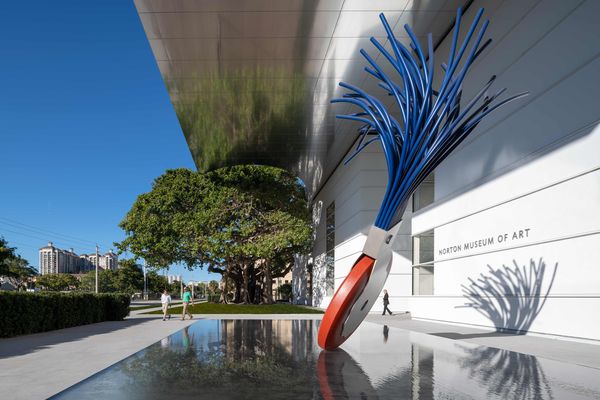The Norton Museum of Art's new Heyman Plaza, designed by Foster + Partners. Featuring Typewriter Eraser, Scale X (1999) by Claes Oldenburg and Coosje Van Bruggen. Image © Nigel Young / Foster + Partners
Nestled in West Palm Beach, the Norton Museum of Art is a historic institution—originally opened in 1941 within the Art Deco framework of architect Marion Sims Wyeth. The Norton's permanent collection boasts significant holdings in its core categories of American, Chinese and European art as well as fine art photography and contemporary sculpture.
Now reimagined for 2019 by the Pritzker Prize-winning architect Lord Norman Foster of Foster + Partners, the Norton reopened to the public this past February with eight special exhibitions and a brand new sculpture garden. Inspired by the museum's sense of place and history in South Florida, three site-specific installations were commissioned to sit within Foster's expanded six-acre campus, which allows for an additional 59,000 square feet of exhibition and event space. Among them, for the Ruth and Carl Shapiro Great Hall, the architectural heart of the museum: Pae White created Eikón, a 40-foot-long, 15-foot-tall tapestry.
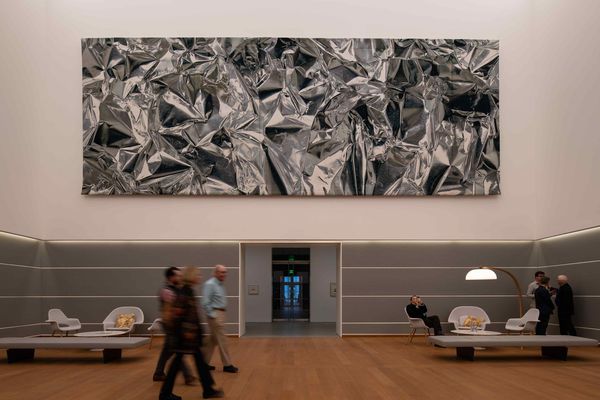
Pae White's Eikón, a 40-foot-long, 15-foot-tall tapestry in the Norton Museum of Art’s new Ruth and Carl Shapiro Great Hall, designed by Foster + Partners. Image © Nigel Young / Foster + Partners
In celebration of the institution's spirited reopening, we sat down with Deputy Director Sam Ankerson to discuss the Norton's past, present and future.
PHILLIPS: Tell us about the foundation and history of the Norton Museum
SAM ANKERSON: The Norton was founded in 1941 in West Palm Beach as the Norton Gallery and School of Art by Ralph and Elizabeth Norton. Mr. Norton was President of the Acme Steel Company in Chicago, and the wealth he generated combined with an abiding interest in art that began with visits to the Art Institute of Chicago launched a collecting career that began in the 1920s and continued until his death in 1953. He began with Realist American pictures and soon developed a taste for a range of modern and avant-garde work. At the time of the opening of the gallery, the Nortons had assembled an excellent collection of modern American and European paintings and works on paper, as well a group of Old Master paintings.
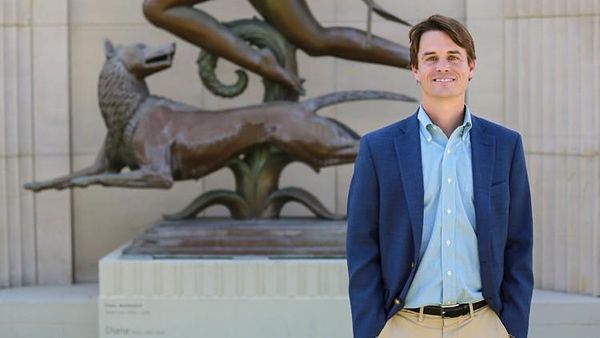
Deputy Director Sam Ankerson at the Norton Museum of Art. Photo Credit: Bruce R. Bennett / Palm Beach Daily News
Although the Nortons had vacationed in Palm Beach for years, it was in 1935 when Mr. Norton retired from Acme Steel that they made Palm Beach a more permanent home and he began to think about making the collection available, in Norton's words, "for the education and enjoyment of the public." After first exploring options on Palm Beach Island, he made the decision to build across the Intracoastal Waterway in West Palm Beach, in part to place the museum in a larger and less seasonal community. The result was an Art Deco gem designed by Marion Sims Wyeth that arranged galleries, studios and an auditorium around a central courtyard. The Norton Gallery and School of Art opened on 8 February, 1941, and, in addition to the approximately 160 works on view, offered a program of classes, lectures and performances—and free admission. It was South Florida's first art museum.
Following the opening, Norton's pace of collecting increased substantially. He expanded to sculpture and built a significant collection of Chinese art and artifacts as well. Mrs. Norton died in 1947 and Mr. Norton in 1953; their combined gifts and bequests left a collection of some 700 works including important examples by Picasso, Cézanne, Renoir, Monet, Brancusi, Soutine, Degas, Matisse, Gauguin, Pollock, O'Keeffe, Hopper, Homer and many others.
In the decades since, the institution's name changed to the Norton Museum of Art, the campus expanded through additions and renovations and the collection has grown to over 7,600 works today. In addition to the original focus of American, European and Chinese, which was established by Norton, the Museum has added strong collections of Photography and Contemporary Art. On 9 February, 2019 the Museum opened its most ambitious and transformative expansion since 1941: a 59,000‐square foot addition of galleries, education, and public spaces, and a first‐time sculpture garden, all designed by Lord Norman Foster of Foster + Partners.
Foster + Partners' careful calibration of the intersections and transitions between newly‐constructed spaces and the historic 1941 galleries is spot‐on.
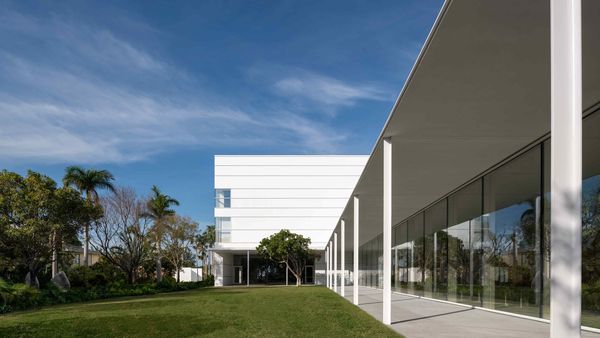

Above from top: The Pamela and Robert B. Goergen Garden at the Norton Museum of Art; and view of the Norton's new Kenneth C. Griffin Building, designed by Foster + Partners, as seen from S. Dixie Highway. Image © Nigel Young / Foster + Partners
P: What was the priority for the Museum when contemplating such a large‐scale renovation? How did history factor into the renovation of the Museum?
SA: In conceiving this expansion, the Museum's Trustees and staff leadership were committed to an ambitious vision for the institution in which its architecture announced and reflected the high quality of the collections, and which would provide the public with a modern, inspiring and aspirational space in which to enjoy art and participate in the Museum's broad range of public programs. This spirit of aiming high and prioritizing public access and education traces a direct line to Norton's founding vision.
P: What were the specific areas from the original 1940s architecture that Foster + Partners wanted to preserve and integrate? Was this a careful conversation between the firm and the Museum going into the project?
SA: Foster + Partners' careful calibration of the intersections and transitions between newly‐constructed spaces and the historic 1941 galleries is spot‐on, enhancing visitor's sense of variety in tone, size and character in the Museum's gallery spaces. One feature of the 1940s architecture that Foster prioritized restoring was the east‐west axis of the Museum's design and circulation. Expansions in the 1990s and early 2000s had re‐oriented the Museum's entrance to its south side (away from the eastern orientation designed by Wyeth, which overlooked the Intracoastal) and somewhat confused the floor plan. Today, a visitor standing in the new Great Hall can view a direct line through galleries of Modern European masterpieces, through the Central Courtyard to the historic 1941 galleries (today housing the American collection), and onward to the east, the water and the island of Palm Beach.
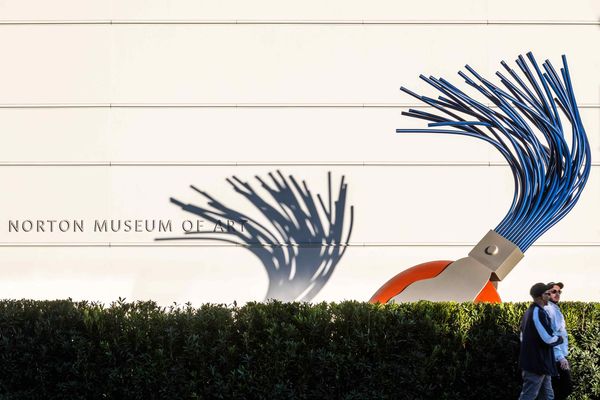
Typewriter Eraser, Scale X (1999) by Claes Oldenburg and Coosje Van Bruggen in front of the Norton Museum of Art. Image © Nigel Young / Foster + Partners
P: A breathtaking aspect of the new entrance is the 19‐foot sculpture, Typewriter Eraser, Scale X (1999), by Claes Oldenburg and his wife Coosje van Bruggen. How long has this work been in the Museum’s collection?
SA: Typewriter Eraser, Scale X is a tremendous feature of the entrance plaza, complementing an 80‐foot Banyan tree on the other side of the plaza. It is also quite the selfie magnet! The sculpture is a 2018 gift from Trustee Ronnie Heyman, made for the purpose of this expansion and opening. The gift was made in consultation with Lord Foster about its location, for which he designed a water feature in which to center the sculpture.
P: How do you see this extension not only expanding the square footage of the museum but expanding the museum's role within the larger Palm Beach community?
SA: In working with Foster + Partners, the Museum wanted to provide a great work of architecture for the Palm Beach area, one that would attract and inspire visitors in its own right, and that in conjunction with investments in program and in access (i.e. two days of free admission a week) would transform how this community values art and culture. They wanted to use this Museum as a resource and a place to relax, recharge and learn. In these early weeks and months, we are glad to say we're seeing it begin to take shape. Public response — from the perspectives of both attendance and participation as well as subjective feedback — has been amazing.
The spirit of...prioritizing public access and education traces a direct line to Norton's founding vision.
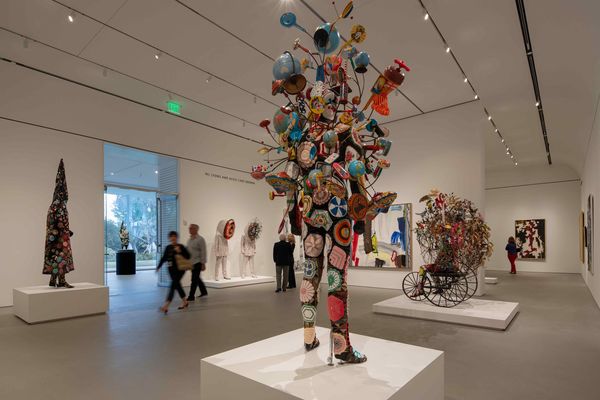
Installation view of Going Public: Florida Collectors Celebrate the Norton. Image © Nigel Young / Foster + Partners
P: How do you use programming — like your lecture series, featuring artists including Nick Cave this month — to engage the public?
SA: Through artist and curator conversations, lectures, music and dance performances, film, studio workshops tours, community festivals and other programs, we're looking to engage the broadest possible audience. We want people to learn, but first to come to the Museum and have a good time doing it. The new Norton has some terrific spaces for programs, including a 210‐seat auditorium, two classrooms, the garden and the Great Hall. The debut this season of our Arts Leader Lecture Series, which featured talks by critic Hilton Als and artists Nick Cave and Teresita Fernández, has been a highlight. With Nick Cave, I think we could have filled a 500‐seat auditorium.
P: The Norton is well‐known for its collections of American and Chinese art and photography, among other categories. In your words, what sets this museum apart?
SA: This is a truly fine permanent collection, one of the best in the Southeast, that surprises and delights visitors who get to enjoy these works in a scale and setting that is manageable, and beautiful. It's a place to view the pioneers of modern art, treasures of ancient civilization, groundbreaking and challenging contemporary work, to relax in a tropical sculpture garden, and to soak up some south Florida sun...all less than a mile from the beach. Our curators have also earned a national reputation for a special exhibition program that specializes in emerging, rising women artists, artists of color, and photographers. Of particular note is our RAW – Recognition of Art by Women exhibition series, now in its seventh edition, organized by Cheryl Brutvan, the Glenn W. and Cornelia T. Bailey Curator of Contemporary Art. The RAW series has given early solo shows to artists including Jenny Saville, Phyllida Barlow and Njideka Akunyili Crosby, just to name a few. This year's RAW exhibition is Nina Chanel Abney: Neon, and is on view through June 25.
Visit www.norton.org to learn more about the Norton.
